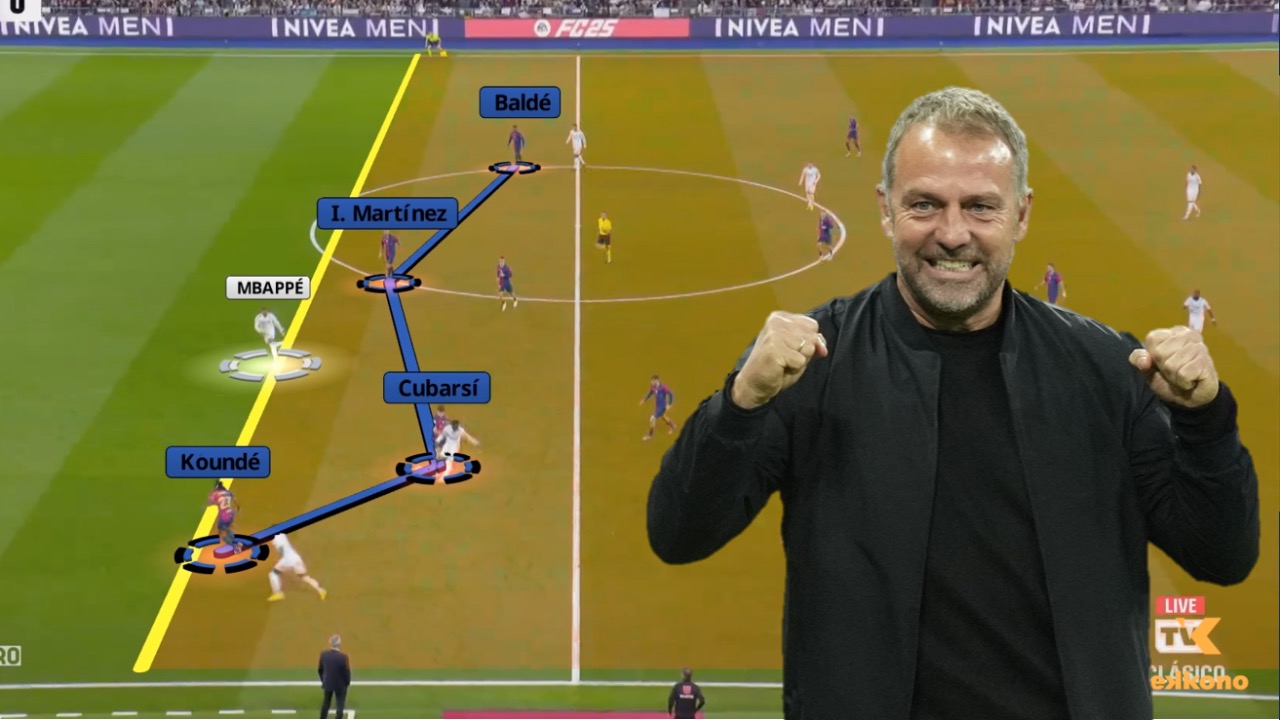
Introduction
In just three months, Hansi Flick has managed to firmly establish his style at FC Barcelona, leading the Catalan giants to an outstanding level of performance, marked by consistent and dominant results in La Liga and Champions League. In this article, we’ll dive into the tactical keys that explain the success of the team under the German coach’s guidance.
High Defensive Line
To begin with, let’s look at Barcelona’s defensive approach under Flick, which stands out for its high defensive line. Barcelona is the European team that forces its opponents into offside the most times per game. This is probably the biggest change that Hansi Flick has brought to FC Barcelona.
The core element here is defensive coordination, where players maintain tight synchronization among their defensive line teammates. The defenders remain concentrated on the movements of the ball carrier. If an opposing player is in a position to play a pass behind the line, Barcelona’s defenders anticipate and position their bodies to allow for quick retreat if necessary. In the era of VAR, Barcelona has mastered the art of the offside trap, with excellent timing in observing the ball holder and knowing precisely when to step forward to force the potential receiver into an offside position.
The primary center-back plays a pivotal role in this structure, setting the line for the rest of the defense and organizing the team’s positioning. This high line is maintained by sharp game reading, where defenders identify the right moments to hold the line, such as when the ball carrier is facing away or plays a backward pass.
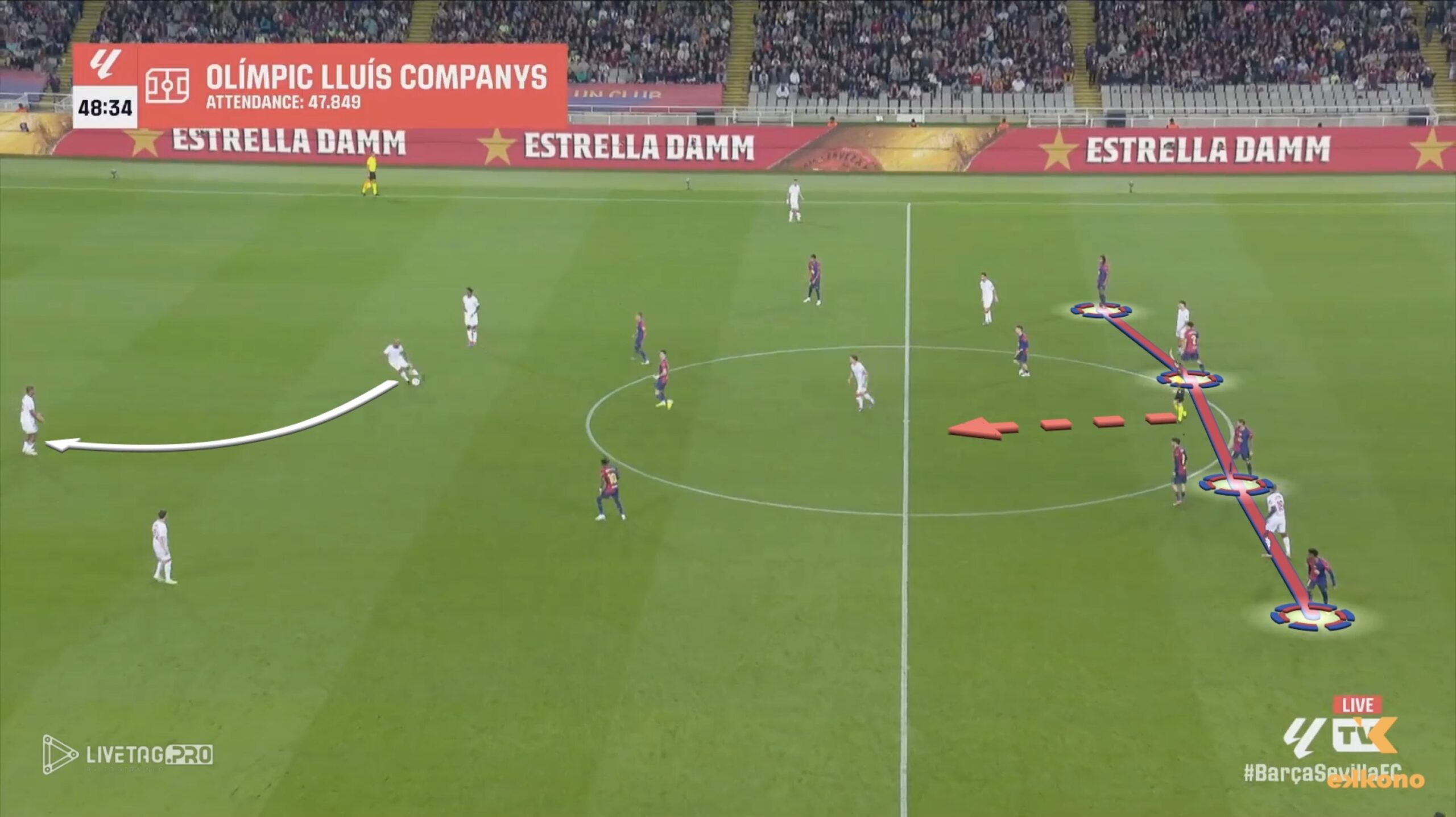
High Defensive Line
In this action, we see that when the opponent makes a back pass, Barcelona's defensive line moves higher up to compact the defensive block.
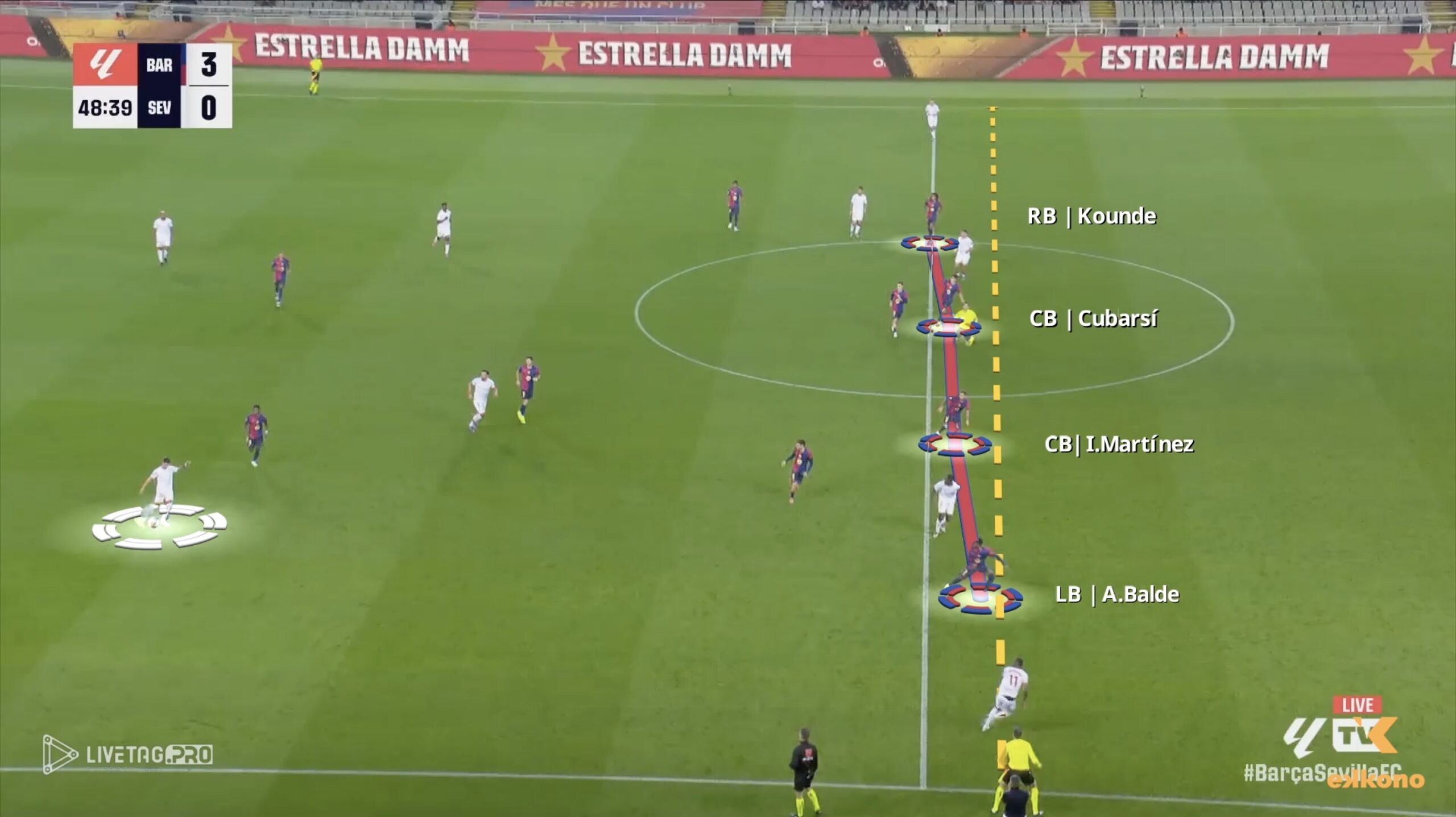
High Defensive Line 2
At the moment of the pass, the entire defensive line is almost perfectly aligned, keeping their position and catching the Sevilla player offside.
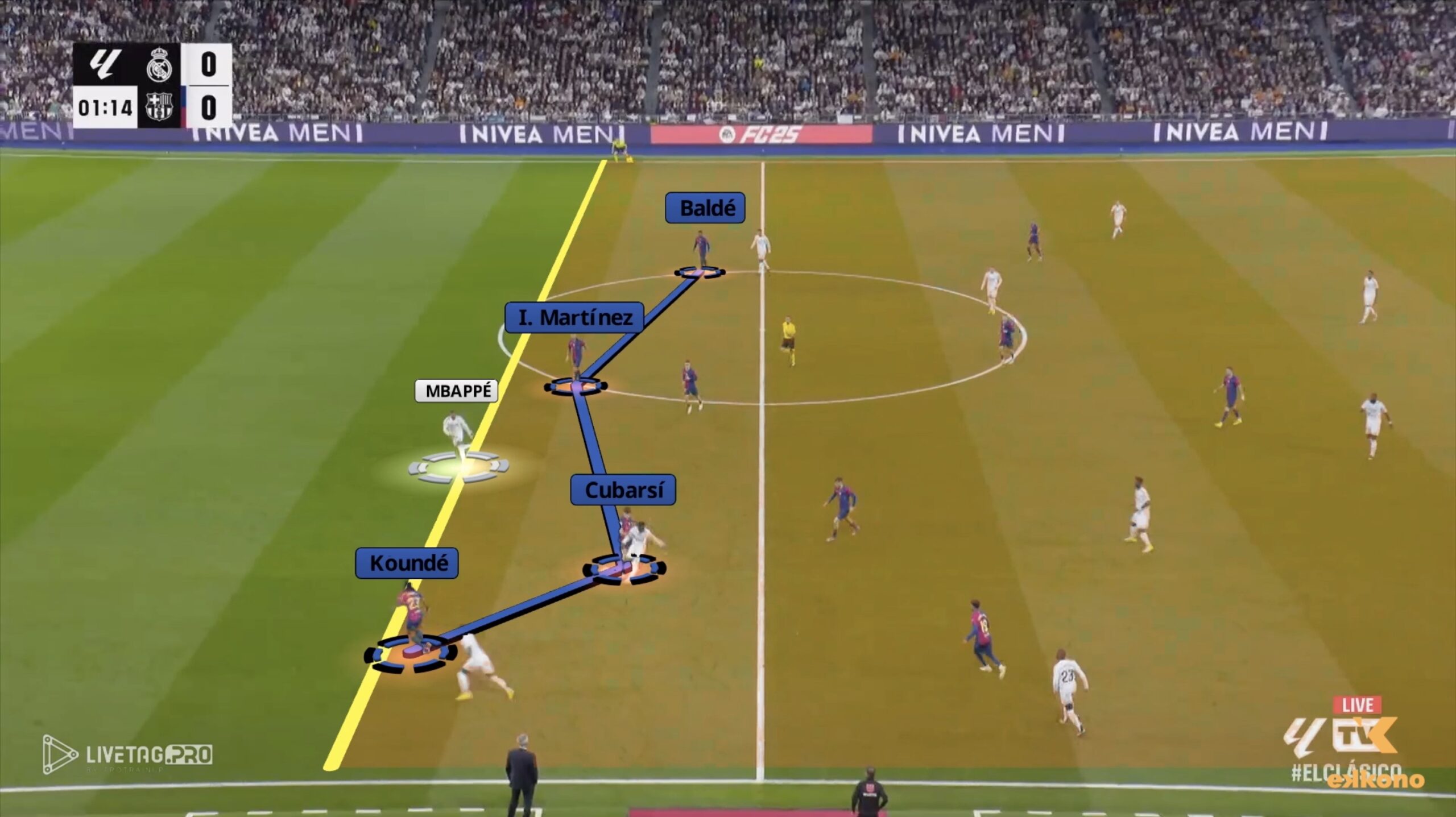
High Defensive Line. FC Barcelona vs Real Madrid
Another example of coordinated defensive work from the latest El Clásico against Real Madrid: Mbappé is caught offside again, bringing his total to eight offsides in the match.
Defensive Transitions: Counter Pressing
Another key element in Flick’s tactical setup is defensive transition, where the players respond quickly after losing possession. Nearby players apply immediate pressure to the ball carrier and block passing lanes, while others further away compact the team to crowd the area and limit the opponent’s options. Defensive surveillance, especially from the center-backs and a holding midfielder, creates a +1 numerical advantage at the back, allowing Barcelona to regain possession quickly and disrupt any attempts to attack. This is one of the key principles of Hansi Flick at FC Barcelona, making it non negotiable to keep pressing and counter pressing until the end of the match, regardless of the opponent.
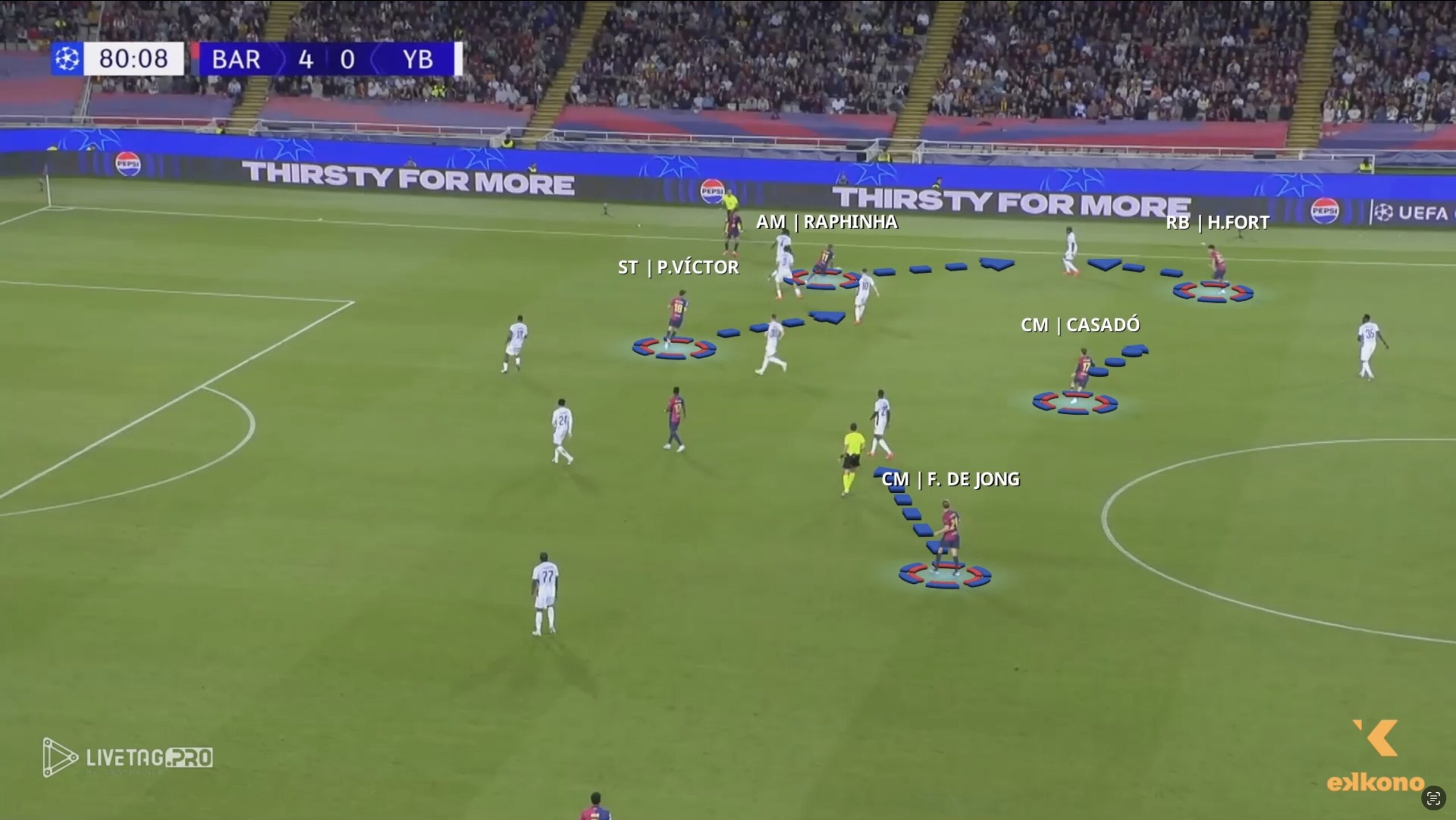
Defensive Transition
As soon as Raphinha loses the ball, the nearest Barcelona players narrow the space, marking the opposing players.
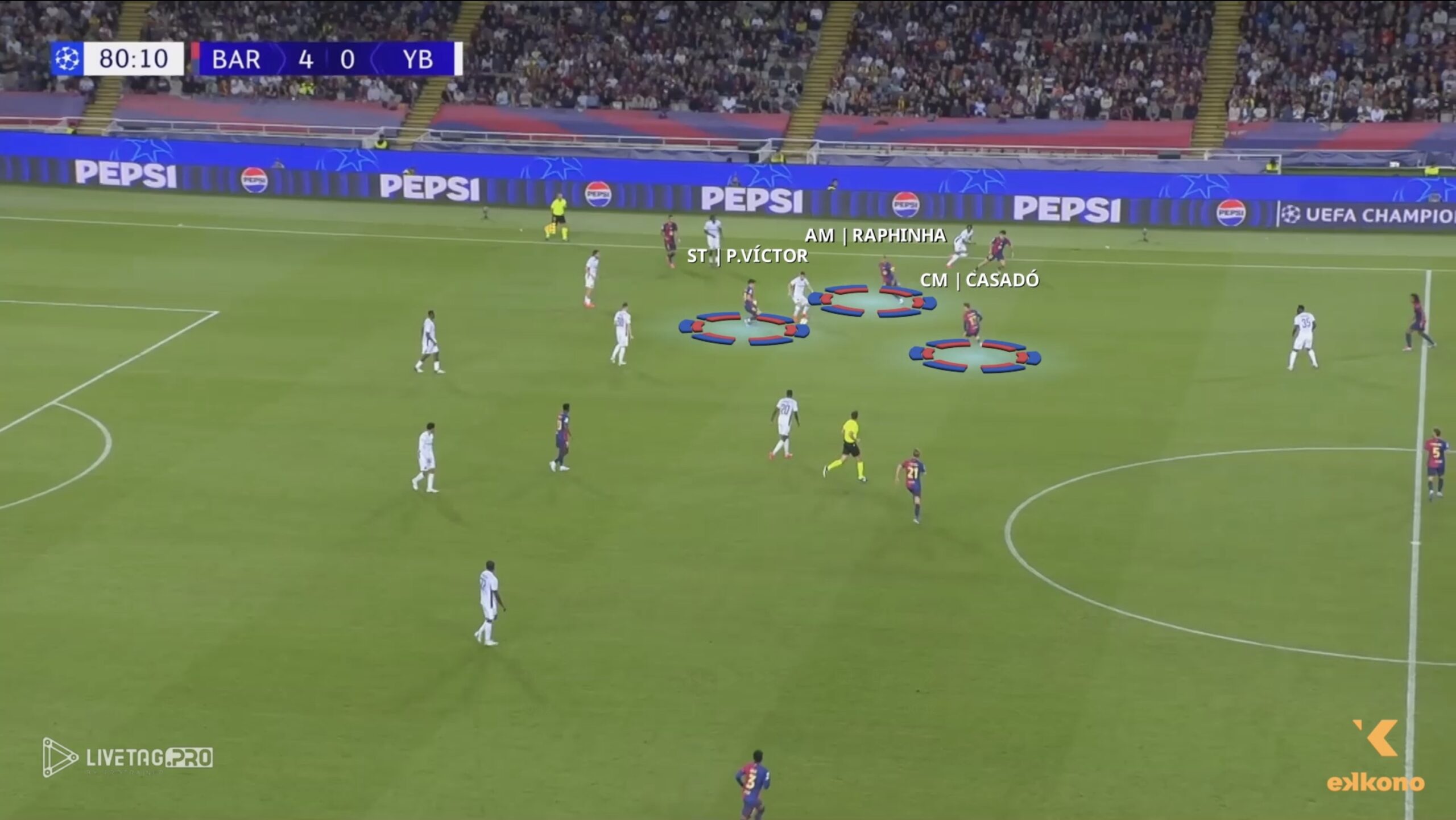
Defensive Transition 2
We can see how the ball holder is pressured by three Barcelona players at once, allowing them to win back possession.
Using Off-Ball Movement to Unbalance the Defense
Finally, it’s worth highlighting Flick’s use of off-ball movement and tactical rotations to break down high and mid-block pressures. Against high presses, Flick has introduced movements where Lewandowski drops to receive in a false 9 role, drawing opponents and creating space in depth for the wingers, typically Raphinha. Here, Barcelona can choose between playing directly into the space behind with winger runs or playing through Lewandowski, who then finds a free midfielder to play the ball behind for the winger’s run.
When facing a mid-block, Barcelona places players between the opponent’s defensive and midfield lines—often the attacking midfielder, one of the wingers (frequently Raphinha), and the center-forward. These players create doubts for the defenders, alternating between receiving and making runs behind, which leads to defensive confusion and creates advantageous situations for the attackers. This tactic is employed when the ball carrier is in a position to pass.
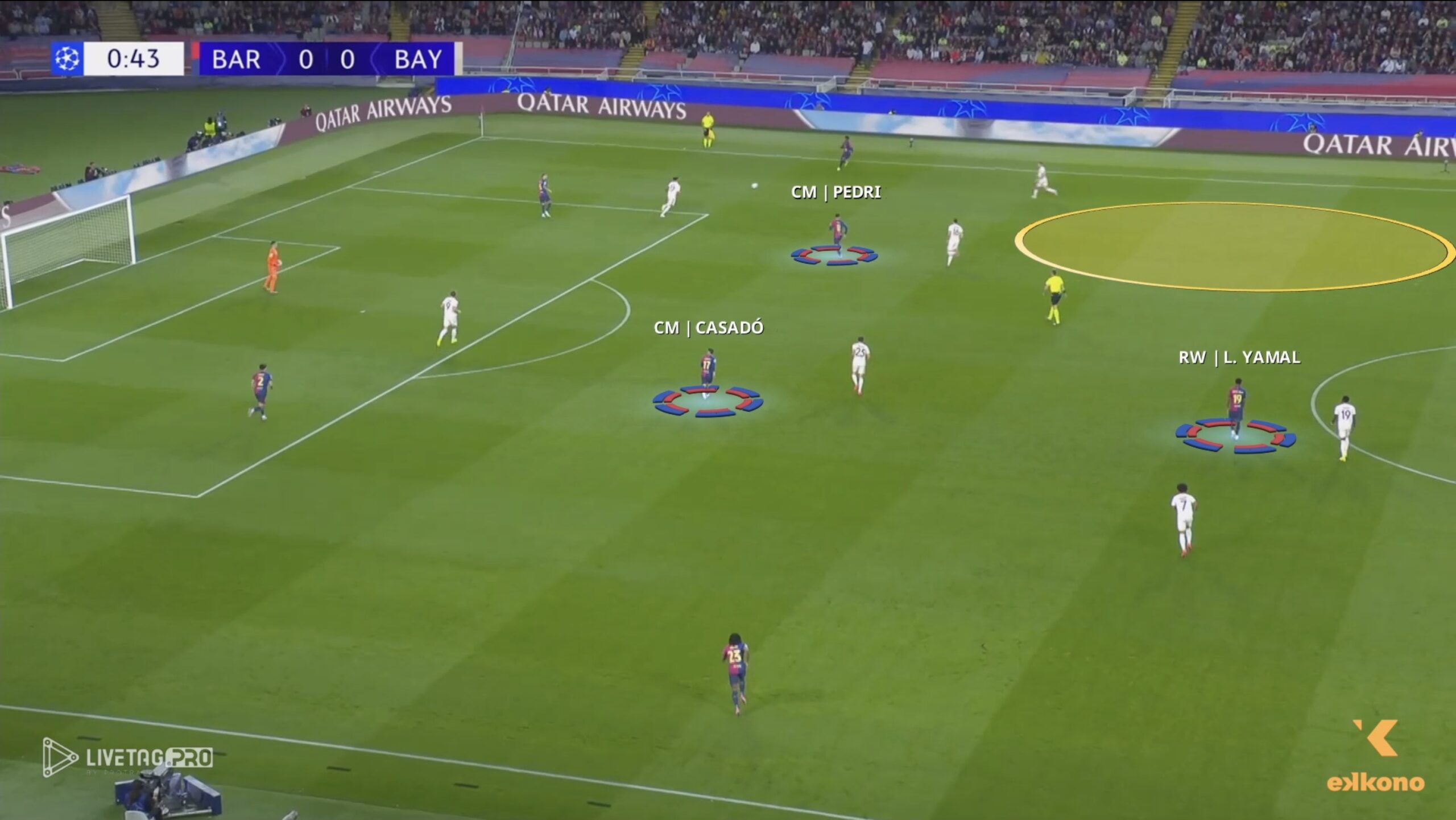
Off-Ball Movement to Unsettle the Defense
In this example, we see a tactical rotation of players. Raphinha (LW) moves higher up, creating space, while Yamal (RW) shifts towards the center of the field.
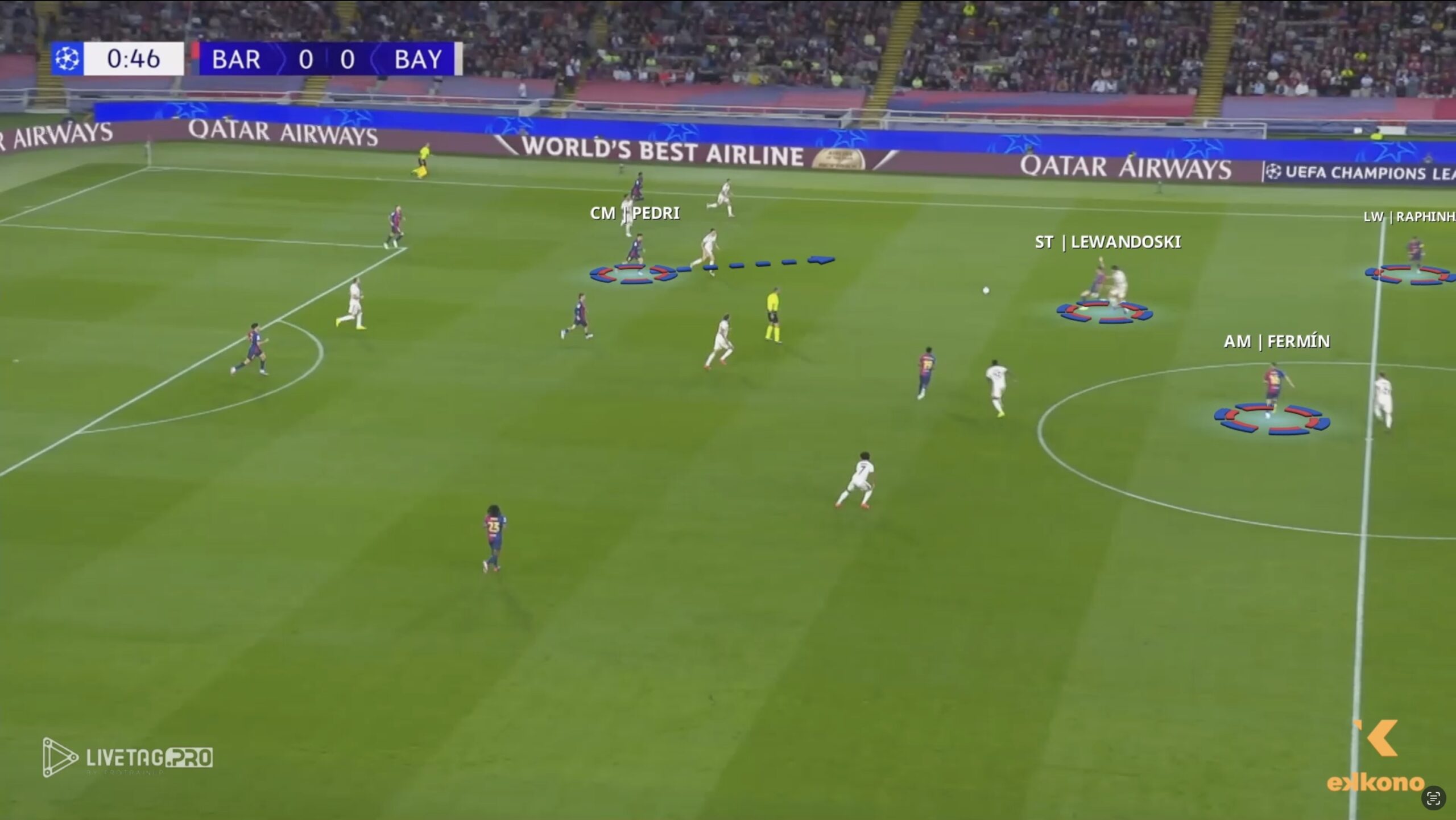
Off-Ball Movement to Unsettle the Defense 2
Lewandowski drops as a false nine, occupying free space and making a pass to Fermín (AM).
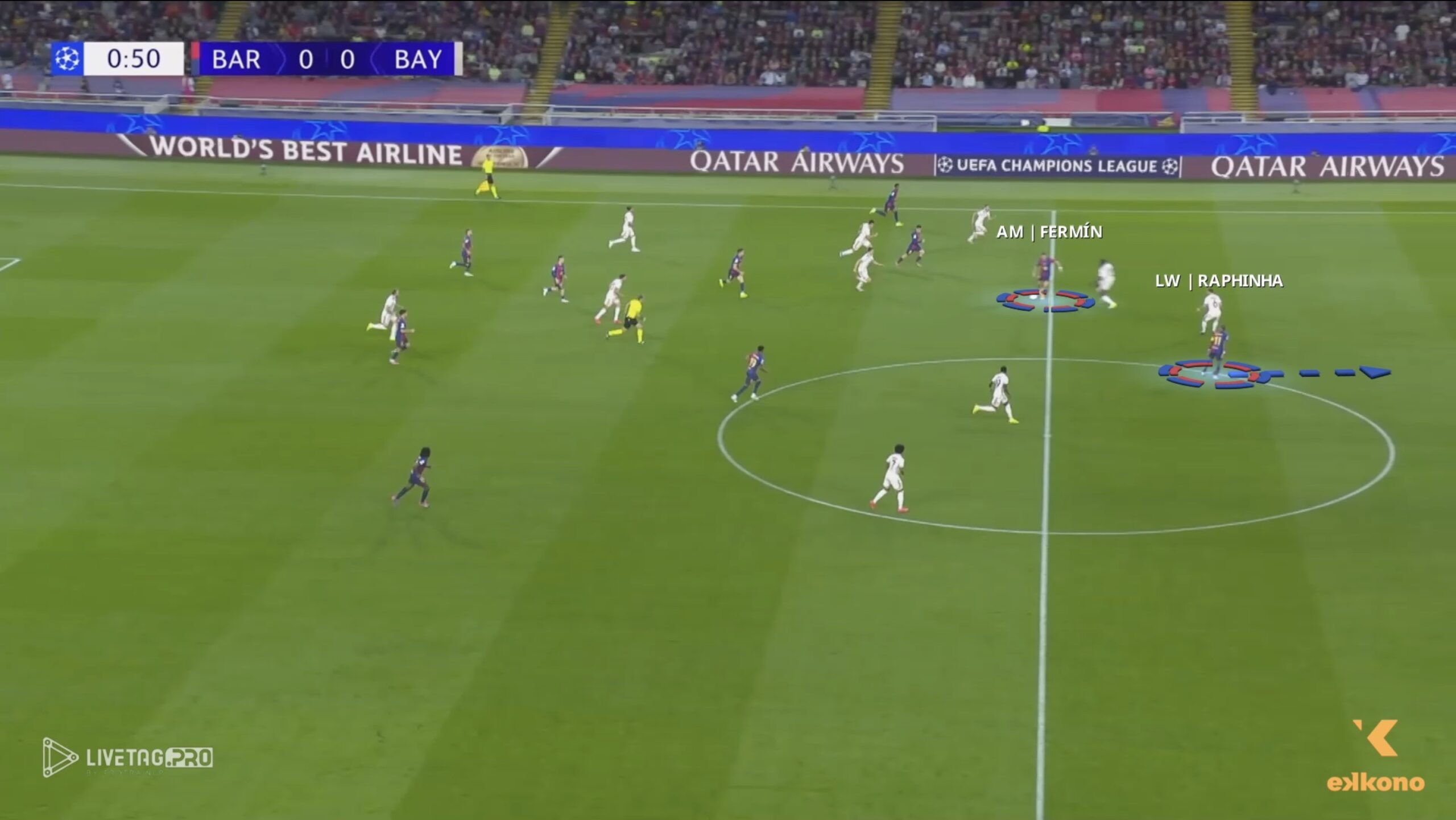
Off-Ball Movement to Unsettle the Defense 3
Raphinha makes an unmarking movement, receives a pass from Fermín, and goes one-on-one with Neuer.
Conclusion
Under Hansi Flick’s leadership, FC Barcelona has had a phenomenal start to the season, with a tactical approach that has exceeded expectations. The German coach has transformed Barcelona into a serious contender for the best team in Europe, setting a high standard that could see them emerge as top contenders in the UEFA Champions League if they continue on this trajectory.
For soccer coaches looking to gain insights into modern tactical evolution, Flick’s Barcelona is proving to be a rich case study in effective pressing, high-line defending, and dynamic off-ball movement.
Remember you can watch the full analysis in video inside our virtual campus. Not a member? Check our membership plans and sign up now.

